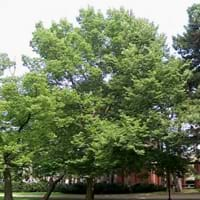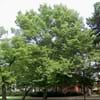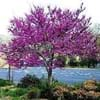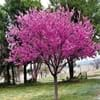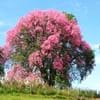Life Span
Perennial
Annual and Perennial
Type
Tree
Bulb or Corm or Tuber
Origin
North America, Canada
Central America, South America
Types
Celtis africana, Celtis australis, Celtis bungeana
Vine, Flowering plant
Habitat
bottomlands, limestone outcrops
All sorts of environments, Along Railroads, Banks, Moist Ditches, Roadsides, rocky banks of streams
USDA Hardiness Zone
2-9
10-13
Sunset Zone
1a, 1b, 2a, 2b, 3a, 3b, 4, 5, 6, 7, 8, 9, 10, 11, 12, 13, 14, 15, 16, 17, 18, 19, 20, 21, 22, 23, 24
21,22
Habit
Spreading
Vining/Climbing
Minimum Width
Not Available
Flower Color
Green
Purple, Rose
Flower Color Modifier
Bicolor
Bicolor
Fruit Color
Purple
Not Available
Leaf Color in Spring
Light Green
Purple, Dark Green, Black
Leaf Color in Summer
Dark Green
Light Green
Leaf Color in Fall
Light Yellow
Several shades of Green
Leaf Color in Winter
Not Available
Light Green
Leaf Shape
Toothed
Acicular
Plant Season
Fall
Spring, Summer, Fall, Winter
Sunlight
Full Sun
Full Sun, Partial Sun
Growth Rate
Medium
Very Fast
Type of Soil
Clay, Loam
Clay, Loam, Sand
The pH of Soil
Acidic, Neutral, Alkaline
Acidic, Neutral, Alkaline
Soil Drainage
Average
Well drained
Bloom Time
Spring
Late Spring, Early Summer, Summer, Late Summer, Early Fall, Fall, Late Fall
Tolerances
Drought, Heat Tolerance, Salt, Shade areas
Drought
Where to Plant?
Ground
Container, Ground
How to Plant?
Grafting, Seedlings
Cuttings, Leaf Cutting, Tuber propagation
Plant Maintenance
Medium
Medium
Watering Requirements
Needs 2-3 times watering per week
Keep the Soil well drained, Needs very little water
In Summer
Average Water
Lots of watering
In Spring
Moderate
Moderate
In Winter
Average Water
Average Water
Soil pH
Acidic, Neutral, Alkaline
Acidic, Neutral, Alkaline
Soil Type
Clay, Loam
Clay, Loam, Sand
Soil Drainage Capacity
Average
Well drained
Sun Exposure
Full Sun
Full Sun, Partial Sun
Pruning
Remove damaged leaves, Remove dead branches, Remove dead leaves, Remove tight V-branching crotches
Remove damaged leaves, Remove dead branches, Remove dead leaves
Fertilizers
All-Purpose Liquid Fertilizer, Apply 10-10-10 amount, organic fertlizers
All-Purpose Liquid Fertilizer
Pests and Diseases
Black sooty mold, Fungal Diseases, Powdery mildew, Red blotch, woolly aphid
Red blotch
Plant Tolerance
Shade areas
Drought
Flowers
Insignificant
Showy
Flower Petal Number
Not Available
Single
Foliage Texture
Medium
Coarse
Foliage Sheen
Matte
Matte
Attracts
Birds, Insects
Aphids, Beetles, Cutworms, Insects, Mites, Whiteflies
Allergy
Not Available
Abdominal pain, allergic reaction, Nausea, Skin rash, Twitching of face
Aesthetic Uses
Not Used For Aesthetic Purpose
Not Used For Aesthetic Purpose
Beauty Benefits
Slow downs aging
Not Available
Edible Uses
Sometimes
Yes
Environmental Uses
Food for animals, Food for birds
Air purification
Medicinal Uses
Colic, Diarrhea, Dysentry, Menstrual Disorders, Sore throat
Cures constipation, Fiber, Low calories, lowering blood pressure, Potassium, ß-carotene, Vitamin A, Vitamin C
Part of Plant Used
Fruits, Pulp, Seeds, Wood
Leaves, Root, Shoots, Stem, Tuber
Other Uses
Food for animals, Used as a nutritious food item
Starch, Used As Food, Used as Ornamental plant
Used As Indoor Plant
No
Sometimes
Used As Outdoor Plant
Yes
Yes
Garden Design
Screening / Wind Break, Shade Trees, Street Trees
Container, Edible, Groundcover, Hanging Basket, Herb / Vegetable, Mixed Border, Rock Garden / Wall, Vine
Botanical Name
CELTIS occidentalis
IPOMOEA batatas 'Blackie'
Common Name
Common Hackberry, Hackberry
Blackie Sweet Potato Vine, Sweet Potato Vine
In Hindi
HACKBERRY
शकरकन्द
In German
Hackberry
Süßkartoffel
In French
micocoulier
Patate douce
In Spanish
almez
Ipomoea batatas
In Greek
hackberry
Sweet potato
In Portuguese
hackberry
Batata-doce
In Polish
hackberry
Wilec ziemniaczany
In Latin
Hackberry
Ipomoea batatas
Phylum
Magnoliophyta
Tracheophyta
Class
Magnoliopsida
Magnoliopsida
Order
Urticales
Solanales
Family
Ulmaceae
Convolvulaceae
Clade
Angiosperms, Eudicots, Rosids
Angiosperms, Asterids, Eudicots
Tribe
Not Available
Not Available
Subfamily
Not Available
Not Available
Number of Species
Not Available
Season and Care of Hackberry and Sweet Potato Vine
Season and care of Hackberry and Sweet Potato Vine is important to know. While considering everything about Hackberry and Sweet Potato Vine Care, growing season is an essential factor. Hackberry season is Fall and Sweet Potato Vine season is Fall. The type of soil for Hackberry is Clay, Loam and for Sweet Potato Vine is Clay, Loam, Sand while the PH of soil for Hackberry is Acidic, Neutral, Alkaline and for Sweet Potato Vine is Acidic, Neutral, Alkaline.
Hackberry and Sweet Potato Vine Physical Information
Hackberry and Sweet Potato Vine physical information is very important for comparison. Hackberry height is 1,220.00 cm and width 1,220.00 cm whereas Sweet Potato Vine height is 15.00 cm and width Not Available. The color specification of Hackberry and Sweet Potato Vine are as follows:
Hackberry flower color: Green
Hackberry leaf color: Light Green
Sweet Potato Vine flower color: Purple and Rose
- Sweet Potato Vine leaf color: Purple, Dark Green and Black
Care of Hackberry and Sweet Potato Vine
Care of Hackberry and Sweet Potato Vine include pruning, fertilizers, watering etc. Hackberry pruning is done Remove damaged leaves, Remove dead branches, Remove dead leaves and Remove tight V-branching crotches and Sweet Potato Vine pruning is done Remove damaged leaves, Remove dead branches and Remove dead leaves. In summer Hackberry needs Average Water and in winter, it needs Average Water. Whereas, in summer Sweet Potato Vine needs Lots of watering and in winter, it needs Average Water.
